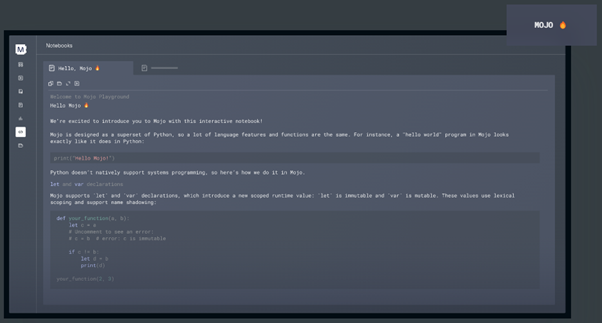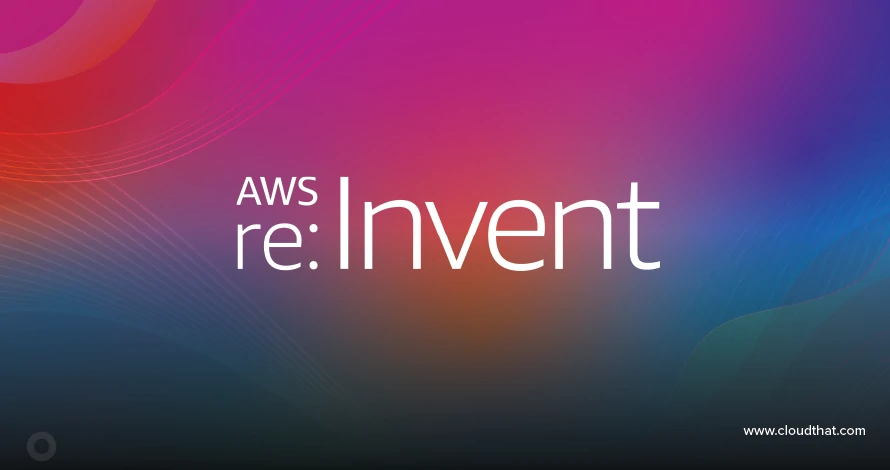|
Voiced by Amazon Polly |
Introduction to Mojo
AI (Artificial Intelligence) is rapidly transforming various industries, and the demand for efficient tools to develop AI applications is increasing. In this article, we will explore Mojo, a revolutionary programming language designed to address the performance limitations of Python in AI and ML applications. We’ll delve into the history, features, and potential of Mojo as a powerful and efficient language for AI development. Additionally, we will compare Mojo’s code for programs like binary search with Python, highlighting its advantages.
Pioneers in Cloud Consulting & Migration Services
- Reduced infrastructural costs
- Accelerated application deployment
The Dominance of Python
Python has emerged as the dominant programming language in various domains, including AI and ML. It is widely adopted due to its ease of learning, extensive community support, and a vast array of libraries tailored for AI development.
Limitation of Python
However, Python does have limitations, especially in the context of AI and ML. One significant drawback is its single-threaded nature, which can hinder performance and scalability in complex AI applications.
What makes Mojo so Powerful?
- Usability & Programmability
Mojo simplifies the development process by allowing developers to write everything in a single language. Whether you prefer the convenience of Python or need to work at a lower level, Mojo has you covered. Unlike other languages, Mojo eliminates the need for C++ or CUDA when programming low-level AI hardware. Some of the notable features of Mojo include:
- Progressive Types: Improve performance and error checking with efficient code execution.
- Zero Cost Abstractions: Gain control over storage allocation for greater flexibility and optimization.
- Ownership + Borrow Checker: Simplify memory safety without manual memory management complexities.
- Portable Parametric Algorithms: Write hardware-agnostic algorithms, reducing boilerplate code.
- Language Integrated Auto-Tuning: Automatically find optimal parameter values for hardware performance. Access to MLIR and a parallel heterogeneous runtime for efficient resource utilization.
- Fast compile times for swift iteration and experimentation: Experience fast compiles times in Mojo, enabling swift iteration and experimentation. Access the full power of MLIR and enjoy efficient resource utilization with Mojo’s parallel heterogeneous runtime.
2. Performance

Image Courtesy 2 PARALLELIZATION
One of the key advantages of Mojo is its ability to unlock Python performance. While Python is known for its simplicity and ease of use, it often performs poorly. Mojo bridges this gap by harnessing the full power of the hardware, including multiple cores, vector units, and exotic accelerator units.
To achieve high-performance execution, Mojo utilizes the world’s most advanced compiler and a heterogeneous runtime environment. With these tools, Mojo enables developers to achieve performance levels on par with C++ and CUDA, all while maintaining the simplicity and user-friendliness of Python.
3. Interoperability
Mojo ensures seamless interoperability with the entire Python ecosystem. Developers can effortlessly combine Mojo code with other Python libraries, such as Numpy and Matplotlib. This interoperability allows AI developers to leverage existing libraries, build on previous work, and create more comprehensive solutions.
By integrating custom code with the Python ecosystem, Mojo offers a unified and cohesive environment for AI development. Developers can leverage the strengths of both Mojo and Python libraries, resulting in more efficient and powerful AI applications.
4. Extensibility

Image Courtesy 3 https://www.modular.com/mojo
Mojo simplifies the process of expanding AI models. Developers can effortlessly integrate pre and post-processing operations, improving their models’ capabilities. Additionally, Mojo allows for substituting existing operations with custom ones, offering flexibility and customization options.
Mojo offers various features that support extensibility, such as kernel fusion, graph rewrites, shape functions, and more. These features empower developers to optimize and enhance their AI models, tailor them to specific needs, and push the limits of what can be achieved.
Features of Mojo
Mojo retains the familiar syntax and compatibility with Python code as a superset of Python. However, Mojo introduces several features that make AI development more powerful and efficient.
- Static typing: Mojo incorporates static typing to prevent type-related errors and optimize code for improved performance.
- Automatic memory management: Mojo simplifies code by automatically handling memory allocation and freeing, reducing bugs, and improving performance.
- SIMD support: Mojo includes SIMD support, enhancing performance for code operating on large data sets by enabling simultaneous operations.
- Concurrency support: Mojo provides built-in support for concurrent execution, reducing overall execution time for AI applications involving parallel processing.
- Ease of use: Mojo offers a user-friendly experience with a simple syntax similar to Python, making code easy to read, write, and maintain. It also provides developer-friendly features to streamline AI development processes.
Mojo Lang: Designed for AI Hardware
Mojo Lang uses CUDA support to leverage AI hardware, such as GPUs. It achieves this through Multi-Level Intermediate Representation (MLIR), which enables scaling to diverse hardware types without complexity.
Mojo Lang maintains full compatibility with Python, ensuring developers can seamlessly interact with the Python ecosystem and utilize popular libraries like Matplotlib and NumPy. This compatibility enables a smooth transition for Python developers exploring Mojo’s capabilities.
Additional Features of Mojo
Mojo introduces additional features that enhance its functionality and performance in AI development:
- Built-in struct keyword: Mojo incorporates the struct keyword, providing developers with better memory management and data structure control.
- Parallelize function: Mojo’s parallelize function enables developers to write multithreaded code, significantly improving performance by leveraging modern multi-core processors.
- Integrated tiling optimization utility: Mojo includes a built-in tiling optimization utility that optimizes data caching and utilization, enhancing performance by managing data movement and reducing memory access latency.
- Autotuning capabilities: Mojo offers autotuning capabilities, simplifying and optimizing code for specific hardware configurations, improving performance.
The Promise of Mojo: Unprecedented Speed

Image Courtesy 4 https://www.modular.com/mojo
One of the most remarkable aspects of Mojo is its potential for delivering astounding speed. Mojo has the potential to be up to 35,000 times faster than conventional Python. With its powerful features and optimization capabilities, Mojo has the potential to revolutionize the field of AI and ML.
Mojo's Potential: Key Aspects to Know
Before delving deeper into Mojo, it’s essential to understand five key aspects that define its uniqueness:
- Chris Lattner’s Brainchild: Mojo was conceived by Chris Lattner, the visionary behind Swift programming language and LLVM compiler toolchain, ensuring credibility and potential.
- Designed for AI Hardware: Mojo is specifically optimized for AI hardware, unlocking the full potential of modern AI accelerators.
- Superset of Python: Similar to TypeScript for JavaScript, Mojo extends Python’s capabilities while maintaining compatibility, eliminating the need to learn a new language.
- Strong Type-Checking: Mojo introduces powerful type-checking, allowing developers to specify static types for optimized performance and error checking.
- Early Development Phase: Mojo is currently in early development and not publicly available, but developers can join a waitlist to explore its potential.

Image Courtesy 4 https://www.modular.com/mojo
Conclusion
By addressing the limitations of Python and leveraging the LLVM infrastructure, Mojo offers unprecedented speed and efficiency for AI development. Although Mojo is in its early development phase, it holds immense promise for developers looking to enhance their AI applications.
As AI evolves rapidly, innovative tools like Mojo are crucial for pushing the boundaries of what’s possible in AI and ML.
Making IT Networks Enterprise-ready – Cloud Management Services
- Accelerated cloud migration
- End-to-end view of the cloud environment
About CloudThat
CloudThat is an award-winning company and the first in India to offer cloud training and consulting services worldwide. As a Microsoft Solutions Partner, AWS Advanced Tier Training Partner, and Google Cloud Platform Partner, CloudThat has empowered over 850,000 professionals through 600+ cloud certifications winning global recognition for its training excellence including 20 MCT Trainers in Microsoft’s Global Top 100 and an impressive 12 awards in the last 8 years. CloudThat specializes in Cloud Migration, Data Platforms, DevOps, IoT, and cutting-edge technologies like Gen AI & AI/ML. It has delivered over 500 consulting projects for 250+ organizations in 30+ countries as it continues to empower professionals and enterprises to thrive in the digital-first world.
FAQs
1. Can Mojo be used for non-AI programming?
ANS: – Yes, Mojo can be used for non-AI programming as well. While it offers specific advantages for AI development, its capabilities extend beyond the AI domain. Developers can utilize Mojo for a wide range of applications where the combination of Python’s ease of use and C-like performance is desirable.
2. Is Mojo suitable for beginners in programming?
ANS: – Mojo’s usability, especially for Python developers, makes it accessible to programmers of various skill levels, including beginners. With its simplified syntax and seamless integration with the Python ecosystem, beginners can learn and leverage Mojo while building their programming skills.
3. How does Mojo compare to other programming languages for AI?
ANS: – Mojo’s unique proposition lies in its combination of Python’s usability and C-like performance. While other languages like Python, C++, and CUDA have their strengths, Mojo offers a compelling balance between ease of use and performance, making it an attractive choice for AI developers.

WRITTEN BY Navneet Nirmal Toppo
Navneet is a Research Associate at CloudThat. He is a Microsoft Certified Solution Professional and a Certified Network Security Specialist and who has experience in AWS, Azure, GCP & vSphere. He is passionate about cloud computing, cybersecurity, and learning new cloud-native technologies who strives to provide the best cloud experience to clients through transparency.


 Login
Login


 June 20, 2023
June 20, 2023 PREV
PREV










Comments